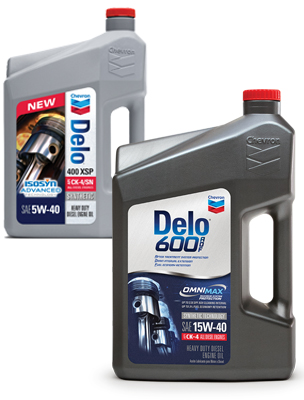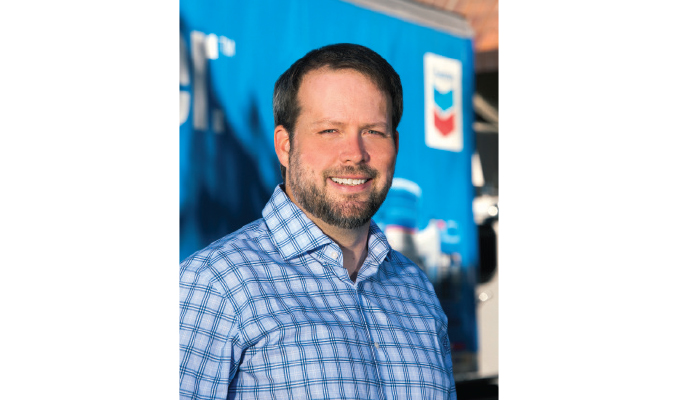Winterization. It’s the process that ensures fleets are ready for the frigid temperatures ahead. The process includes routine maintenance, but there are other considerations to note as well. What kind of engine oil should you use? Temperature plays an important role in engine performance, and Shawn Whitacre from Chevron Lubricants fills us in on what to look for in an engine oil that’s perfect for winter weather.
MWS: WHAT IS ‘WINTERIZATION’ AND WHY IS IT HEARD SO OFTEN IN THE FLEET INDUSTRY?
WHITACRE: Winterization in general refers to preparation one makes to equipment in advance of cold weather. It means being prepared for the unknown. The biggest challenge is that weather itself is often unpredictable—even more so when a fleet vehicle travels all directions at any given time. The vehicle could encounter all kinds of climates, especially during the transition seasons of spring and fall. Winterization is almost always a pivotal consideration for your equipment. Is there predictability in your fleet? Then maybe there is less variability in types of weather you encounter. But if there is any variability, it’s best to prepare for the unknown.

MWS: WHAT IS WINTERIZATION FROM AN ENGINE OIL PERSPECTIVE?
WHITACRE: One of the significant fundamental challenges Chevron has faced when we develop fluids is that we have to ensure that the fluids are functional across a wide temperature range, spanning from when the vehicle/equipment is off and stored in a cold location overnight, up to the temperatures that the fluid encounters inside a running engine and in a local environment that is hot. From that standpoint, the fluids are purposely developed to be functional across a very broad range of temperatures.
For fleet owners, understanding an oil’s viscosity is essential to choosing the right engine oil for your fleet. Viscosity is the measure of the oil’s ability to flow. As temperatures drop, the oil becomes thicker and harder to pump, which makes it harder to start the engine. Chevron provides some oils that use a synthetic base, which tend to lend themselves to better low temperature operability. Oils such as 5W-30 and 5W-40 allow for a robustness to lower temperature operations. They provide as much as 5 to 10 degrees of better robustness to cold climates than the 15W-40 provides.
MWS: HOW CAN A FLEET OWNER/OPERATOR ENSURE THEY ARE ADEQUATELY PREPARED FOR WINTER?
WHITACRE: First, it’s critical to understand the two components of the viscosity grade. The first number represents the low temperature characteristics of the oil (this matters most when discussing winterization), and the second number represents the high temperature characteristics of the oil. A 15W oil is developed to be sufficiently fluid down to -20 to -25 degrees C. As the number decreases, the oil can be used in even lower operating temperatures. For fleets in the most extreme temperatures, a 0W oil will get you down to -35 to -40 degrees C operating temperatures. Those conditions are more typical for northern parts of Canada.
Fleet owners should choose a fluid that has the right viscosity grade for the environment where their vehicles and equipment will be operated. For example: A lot of heavy-duty engines recommend a 15W-40 viscosity grade. What we often see is that a customer will select an all-season product such as a 10W-30 that provides a little bit of robustness for operation year-round or maybe something like a 5W-40, such as Chevron’s Delo 400 XSP 5W-40, that provides strong low-temperature protection.
MWS: WHAT SETS WINTERIZATION APART FROM ROUTINE MAINTENANCE AND INSPECTIONS?
WHITACRE: Coolant. Most types of operation are fairly robust year-round, and that’s the case if you’re running the most typical water combination of 50/50. The biggest concern in terms of coolant protection and winterization is its freeze point. That’s the primary reason ethylene glycol is added to coolant—to lower the freeze point. A 50-50 mixture of water and glycol provides freeze protection down to -34 degrees F. If there are situations where you expect to encounter temperatures below that, a 60/40 glycol and water mixture might be more appropriate. It brings the freeze point protection down from -34 to -63 degrees F, but that’s only recommended when and if you’re going to encounter those extreme temperatures routinely throughout the winter. It’s not an ideal proportion in terms of the heat transfer characteristics of the coolant. Therefore, Chevron recommends you switch back to a 50/50 mixture in summer months.
MWS: ARE THERE SOME CLIMATES WHERE 15W-30 IS GREAT YEAR-ROUND VS. CLIMATES THAT REQUIRE DIFFERENT OILS PER SEASON?
WHITACRE: As long as vehicle and equipment is always in a climate above -20 degrees C then a 15W-40 is appropriate. A lot of on-highway fleets use 10W-30 because it provides a fuel economy advantage and more robustness in low temperature operations. That oil is great for a vast majority of the United States. It’s really during winter operation in northern climates that a 5W and 10W are more appropriate. It can also depend on how equipment is handled when not operational, whether stored indoors or always operational—even if just sitting idle. It depends on the particular application and the operating conditions to dictate what is most appropriate. Switching to winter-grade lubricant provides robustness to variability. That’s critical for a lot of trucks because it’s difficult to predict where the unit will go and how the weather will be when they get there.
MWS: DOES CHEVRON OFFER ANY PRODUCTS SPECIFICALLY FOR USE IN COLD CLIMATES OR IN WINTER WEATHER?
WHITACRE: As mentioned, the Chevron Delo 400 XSP is a full synthetic engine oil offered as 5W-30 or 5W-40. It offers good low temperature protection, and it is a good choice to tap into the performance benefits that full synthetic products bring. In addition to its full-synthetic base, Delo 400 XSP delivers value through minimized operating costs and robust wear control.
Chevron is also learning more about the impact cold weather has on equipment—specifically the aftertreatment system. Emission control systems are typical in newer trucks. These devices require specific exhaust temperatures to function, and they can struggle during winter months. Certain components in the lube oil can interfere with the diesel particulate filter (DPF) because they are incombustible materials that can clog the DPF over time. To combat this issue, Chevron’s Delo 600 ADF (offered as a 10W-30 and 10W-40) features a lower level of materials that could clog the DPF. This low-ash oil keeps the filter clean, which presents fewer challenges the vehicle faces when trying to overcome the lower temperatures prevalent in the exhaust during winter months.
MWS: ARE THERE ADDITIONAL CONSIDERATIONS FOR WINTER?
WHITACRE: There are some other considerations with respect to winterization. Chevron suggests fleets talk to their fuel provider to make sure they’re using a fuel that is appropriate for their application. Sometimes there are winter additives that help with cold weather fluidity preventing the fuel from clogging fuel filters. It’s even more critical for fleets using a biodiesel blend because biodiesels tend not to be ideal fuels in winter climates unless additives are used properly and the fuel is used at the right blending conditions. Diesel exhaust fluid (DEF) also needs to be considered. Winter is a great time to check the function of onboard DEF heaters. Additionally, for general maintenance considerations, it’s a good idea to ensure all your fluid levels are topped off and that hoses are in good condition with no tears or leaks.
FOR MORE INFORMATION
Shawn Whitacre is a senior staff engineer at Chevron. Find out more, visit www.chevronlubricants.com.




